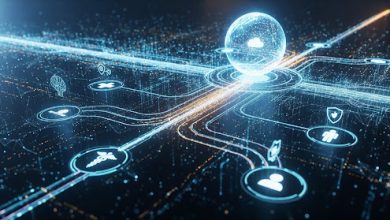
While the nationwide lockdown has contributed to a fall in knife offenses over the past few months, the month of June saw multiple high-profile knife attacks in quick succession as Britain regained some of its freedom.
The challenge for police and communities will be to ensure that high levels of knife crime do not return with the easing of lockdown restrictions.
The challenge of combatting knife crime
As knives can be effectively hidden under clothing, it can be difficult to spot carriers. Even more so in a crowd.
Stop and search is an invaluable tool to combat knife crime and has resulted in more than 3,500 arrests for weapons possession, according to the Metropolitan Police.
But the procedure has long held a reputation of contributing to ‘biased’ policing and can also lead to false allegations of bias against police officers. Both of these scenarios undermine trust between local police forces and communities, which can ultimately make it more challenging for police to prevent and reduce knife crime.
Further integration of new technologies into policing and security could help to spot knife carriers and reduce the need for physical searches, which could contribute to tackling both real and perceived biases.
What new technologies could be used to prevent knife crime?
Thermographic (infrared) cameras, which detect emission of body heat, are a non-invasive solution to discovering hidden weapons, including knives. The cameras are able to detect weapons hidden under clothing as objects over a certain size or made of certain materials, such as metal, block some transmission of body heat.
Infrared technology can be implemented into small portable equipment and could be used as an alternative or ‘first step’ to stop and search procedures on the street, as it is less invasive and more discreet.
Weapons screening with thermographic cameras at entrances to terminals and buildings could help to mitigate safety risks to both personnel and the public and could ultimately save lives. Additionally, mandatory screening for all entrants removes any biases from security protocols and could help to build public trust in security and policing.
Facial recognition is a useful tool for preventing crime. It helps police forces identify people that may pose a risk to public safety and speeds up arrests of those involved in knife crime to ensure they can no longer pose a threat to the public.
Police trials of the technology have used targeted facial recognition, which does not undermine the privacy of the general public.
Targeted facial recognition scans the faces of passers-by and looks for a match within a pre-programmed database of existing persons of interest (also called a ‘watchlist’). In the case of knife crime, only people previously convicted of a knife offence or currently suspected of involvement in serious and violent crime would be included on a police watchlist. In previous facial recognition trials, the data of any person found not to be a match was deleted.
The technology alerts local police forces or security personnel when it recognises a match to its database. Early warning of potential risk can lead to early intervention and the prevention of serious and violent crime.
Additionally, because facial recognition uses biometric measurements to determine identity, it can be far more accurate than CCTV images in helping police to quickly identify perpetrators of violent crime.
Our i7ense software platform, which fuses facial recognition, thermographic imaging, and other technologies, goes even further than this. It can recognise visible weapons such as knives and immediately alert police, which could lead to prompt intervention in a knife attack on the street.

Using data to help prevent and reduce knife crime
There is immense potential for greater use of artificial intelligence (AI) in policing to help both prevent and reduce knife crime.
A little over a year ago, research conducted by Cambridge criminologists while working with a Metropolitan Police detective revealed how police data could be used to predict which areas of the country could be vulnerable to knife crime.
The study identified a trend in which areas with a high amount of knife assaults in the previous year were more likely to see a knife homicide in the following year than areas with no knife assaults.
While ‘predictive policing’ – the use of computer algorithms and statistical data to aid allocation of resources – has been researched and trialled by police forces in England over the past few years, its potential still remains underutilised.
Using AI to discover patterns in knife crime statistics could help police forces to allocate resources where they are most needed, make more informed decisions on specialist training and, ultimately, to prevent crime.
Additionally, there is potential for AI and computer algorithms to help police speed up the removal of violent content online and to tackle threats of violence over social media.
A study involving young people, run by the All-Party Parliamentary Group on Knife Crime, in conjunction with Barnardo’s, revealed that young people felt that they are able to view violent content online too easily and, additionally, that violent content was fuelling a perception that carrying knives ‘was the norm’.
Metropolitan Police commissioner Cressida Dick has also criticised social media, claiming that it has played a role in gang violence and knife crime.
We recognise that there are many contributing factors to the rise in knife crime, including social and economic issues, which arguably won’t be addressed by technology. But existing new technologies can play an important role in immediately tackling some factors in the knife crime epidemic and can help police to protect and save lives.




